With spring, the lush awakening of nature also rekindles the desire to travel and discover new lovely places, taking advantage of the sunny days and mild temperatures which make the departure more pleasant and excite the traveller's imagination.
Do you want to treat yourself to a trip to Italy this spring, but don't feel like visiting the big cities? If you want to find new more hidden places, embellished with a particular aura of magic, Italian villages are really for you. Discover with us the 5 most beautiful villages to visit this spring in Italy, for a journey between relaxation, culture, sport, nature, enchanting landscapes and history!

Discover the most beautiful villages to visit in spring in Italy
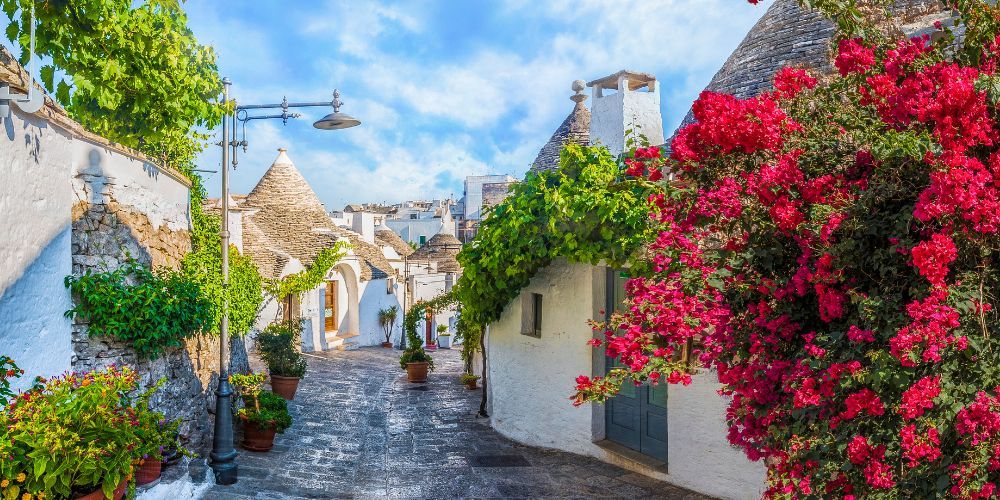
Spring is the ideal season to travel and immerse yourself discovering the most beautiful villages in Italy. In Bel Paese, in fact, this splendid season is characterized by a mild weather, enhanced by the days increasingly longer and brighter and by the majestic awakening of nature, full of colors and scents.
Especially the villages, less crowded than in summer and characterized by a pleasant sense of intimacy that replaces the dullness of winter, offer a magical and evocative atmosphere to explore the hidden treasures over the territory, walking through their picturesque streets, admiring their architecture and monuments and savoring their local cuisine.
Are you already planning your trip? Then you should check out our very useful guides on what to do and where to go in spring in Italy, full of tips and suggestions to make your holiday unforgettable!
So pack your bags and let yourself be amazed by the enchantment of Italian villages in spring, the season that more than any other reveals a side of the country even richer in beauties to discover, for a truly authentic and relaxed travel experience.
5. Cisternino, a splendid spot in Apulia
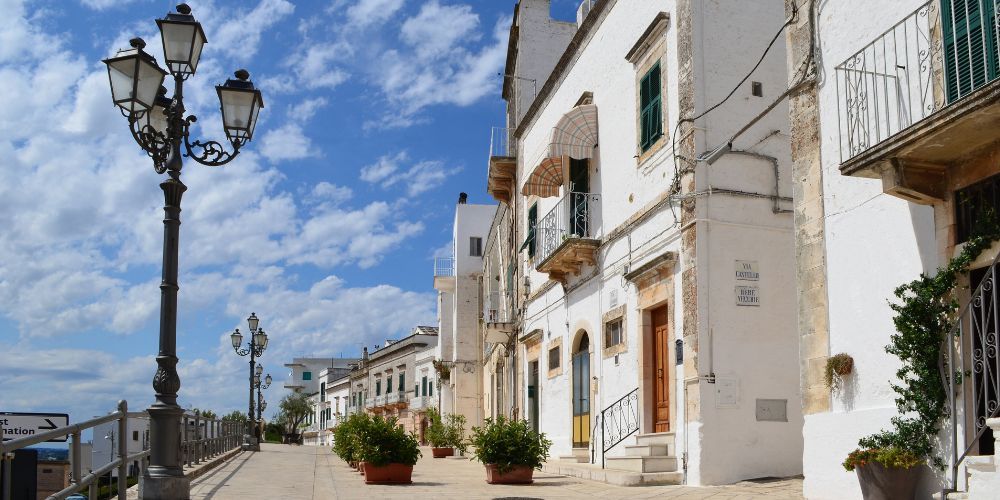
Cisternino is a village in the province of Brindisi overlooking the Itria Valley. It is set on a slight rise and surrounded by lush vegetation full of vineyards, olive groves, and fruit trees. In this village, the land has provided necessities for many centuries, as proved by the presence of several farm stays in the area dating back even to a few centuries ago.
Cisternino has enchanting architectural and archaeological remains adorning its street and testifying to its ancient origins. Moreover, this Apulian jewel is also home to the largest forest located in Brindisi province, numbering hundreds of hectares of Mediterranean scrub.
It is surrounded by trulli, the typical historical regional constructions, and is located near popular Apulian towns such as Ostuni, Locorotondo, and Alberobello. All this explains why Cisternino has joined the Borghi più belli d'Italia list (the most beautiful villages in Italy).
In addition, it also boasts other remarkable awards, such as Slow City, the Italian Touring Club's Orange Flag, and the Green Flag. The Orange Flag is a tourist-environmental quality mark awarded to Italian hinterland small towns that stands out for the excellence and quality hospitality. The Green Flag is an award for mountain communities, farms, organisations, and associations that have distinguished themselves in environmental and landscape protection policies.
When you visit Cisternino, you will be charmed by the bright green of the olive trees and the brilliant white of the city architecture. The town centre is an enchanting network of alleys and narrow streets. Among the historical buildings, we would like to point out Torre di Porta Grande (Middle Ages), Chiesa Madre dedicated to Saint Nicholas, Palazzo Vescovile, Palazzo Amati, Torre Capece, and the Santuario della Madonna d'Ibernia. According to legend, this shrine was built on the site indicated by the Virgin Mary in an apparition.
If you want to enjoy a marvellous view that embraces the whole Itria Valley, we recommend you climb up to one of the many panoramic viewpoints: the panorama is breathtaking! After a pleasant walk, you cannot miss out on an aperitif in Piazza Vittorio Emanuele II, in front of the Torre dell'Orologio.
If you love nature, then do not miss the walk through the wonderful Monti Comunali wood and a visit to the Pomona Gardens. Finally, here are some examples of local gastronomy to excite your appetite: Cisternino is famous for the quality of its meat, such as the famous bombette (veal roulades stuffed and cooked on the grill) and gnummareddi (lamb entrails roulades cooked on the grill).
Discover the cultural and historical attractions of Murge4. Rasiglia, the village of the water streams in Umbria
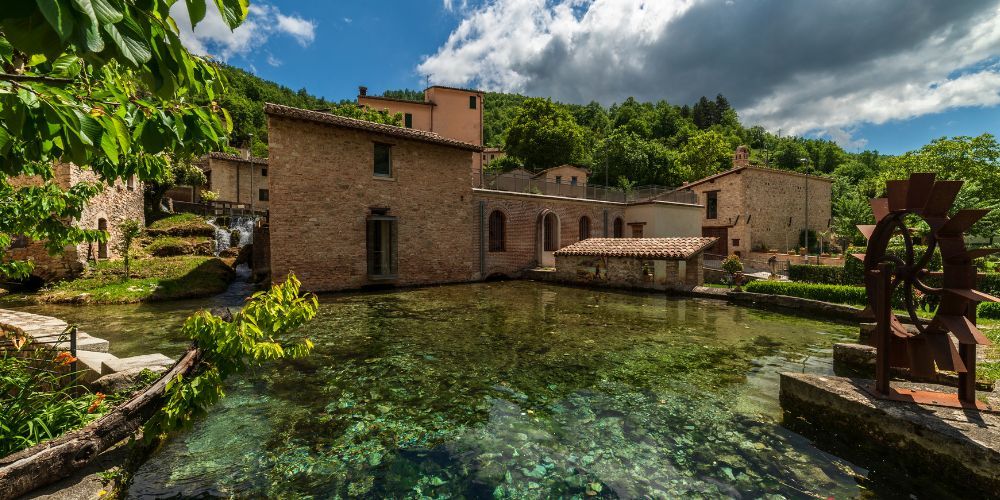
If you are a slow tourism lover, we recommend visiting Rasiglia, a tiny hamlet of Foligno (Perugia). This medieval Umbrian village is the ideal destination for those who love discovering unconventional places, almost frozen in time. You can find Rasiglia lost among the hills and dotted with small rivers and waterfalls.
The countless watercourses intersect in a majestic weave of nature and urban buildings, separated by graceful wooden bridges. The small streams flow right through the old town and, as you walk through the village alleyways, you find yourself constantly flanked by water flowing downhill. Stone moats and artificial canals guide it towards a large basin located in the heart of the village, like a sort of central square. Water has always been a vital element of this village. Not surprisingly, Rasiglia is also known as the village of water streams. Since the Middle Ages, the inhabitants have used the water's energy to power their looms, thanks to which a flourishing textile industry developed.
Rasiglia today is a half-empty village with less than 50 inhabitants! However, it is beginning to enjoy a strong tourist attraction despite its size. The location makes the road to reach Rasiglia tortuous, but the visit is worth the effort. The old town full of old stone houses is so small that it takes little more than 20 minutes to visit it. However, this is precisely the charm of slow tourism: slowing down the pace and enjoying every moment immersed in the beauty of the places you are visiting.
Situated on a hill, you will see the remains of the ancient Rasiglia Castle, the town's historic defensive fortress. As you walk through the village, you will come across the Stone Mill. Thanks to its excellent state of preservation, you can admire a structure that, in ancient times, was used to grind and produce grain. Finally, you can easily reach other beautiful Umbrian towns from Rasiglia, such as Foligno, Montefalco, Spello, and Assisi.
Visit Montefalco and find out the unique taste of Umbria3. Stilo, the thousand-year old village in Calabria
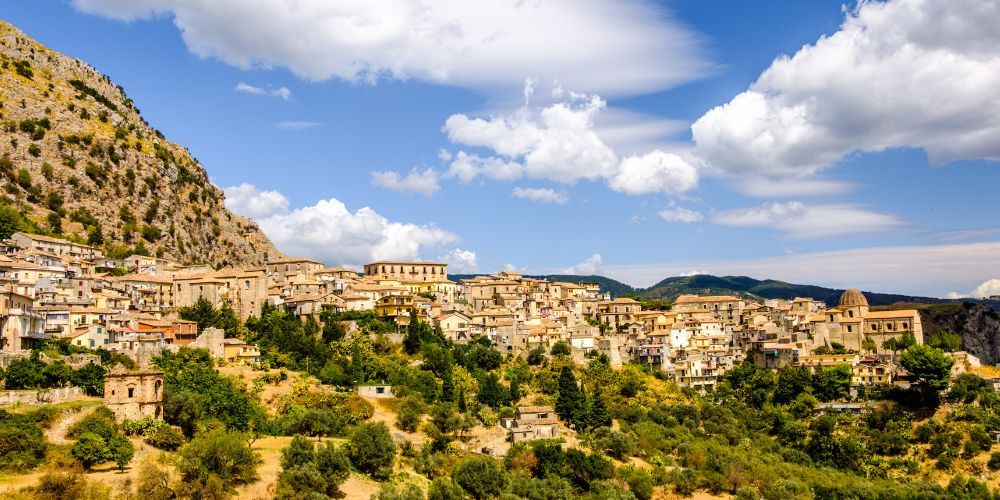
Perched 400 metres above sea level, Stilo was born from a legend. It is said that the inhabitants of a former Greek colony took refuge at the foot of the mountain and created a small town from scratch to escape the continuous invasions by Saracens. One of the first concerns of the townspeople was to build high defensive walls and five large gates to monitor movement in and out of the town. Unfortunately, they have all been lost over time. The Porta Stefanina is the only one that has remained intact.
Stilo, a little jewel of Calabria, is a living testimony to the passage of numerous populations and cultures over the millennia. The vestiges of an ancient past dot the tiny village, making it more than worthy of being on the Borghi più belli d'Italia list (the most beautiful villages in Italy).
Arranged in an enchanting tangle of narrow streets, the houses of Stilo seem to support each other in a great network. Small gardens, pretty courtyards, centuries-old churches, majestic palaces, and huge walls create poetic views, giving the small Calabrian town a suggestive atmosphere.
Here are some unmissable attractions in Stilo: the Dolphin Fountain - known as the Gebbia - (a remarkable testimony to the Arab influence), the Cattolica (a monastic complex dating back to the 10th century), the Duomo (built in the 14th century and restored in the 18th, now in Baroque style) and the Norman Castle dating back to the 11th century. In particular, from this marvellous medieval castle, you can look out over the landscape to the shores of the Ionian Sea.
Curiosity: this small Calabrian village is the birthplace of Tommaso Campanella, a great Italian theologian, and philosopher.
2. Valsinni, the village of poetry in Basilicata
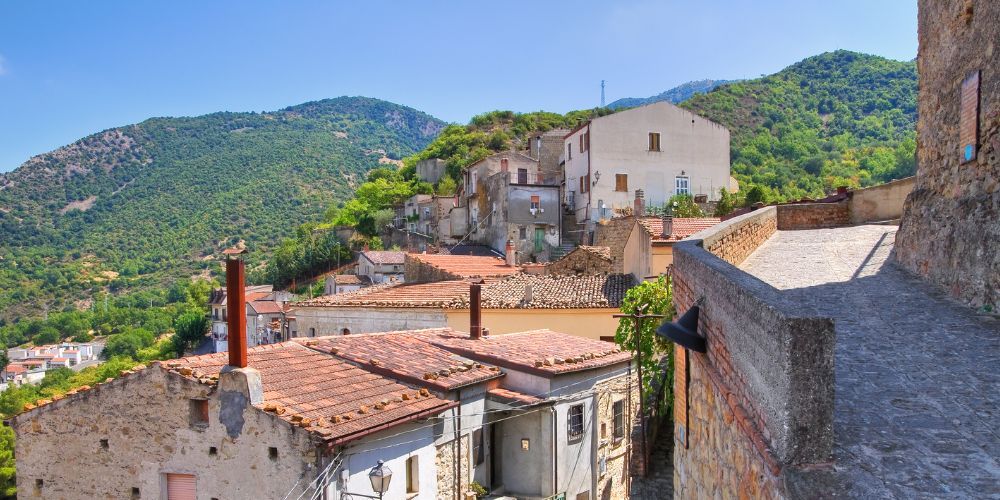
Valsinni is a tiny village on the River Sinni banks in the province of Matera. Enclosed between the sea and the mountains, it locates at the far end of the Pollino National Park. This small town has changed its name only recently: until the second half of the 19th century, it was known as Favale, meaning "land rich in springs".
The village is a real charm, surrounded by a natural landscape setting that embraces the marvellous traces of a glorious past. Valsinni was a fief of many noble families over the centuries. In particular, it is known because it hosted the poetess Isabella Morra, one of the most original voices of female lyricism in the 16th century. All the splendour of the village revolves around the beautiful castle and the story of the female poet. Many tourists in search of enchanting places are attracted by this wonderful jewel in Basilicata.
Isabella Morra was born and spent part of her life in the majestic and romantic feudal castle overlooking Valsinni, presumably built on a pre-existing Longobard fortification. The manor has imposing architecture and preserves rich documentation of artistic works and writings that bear witness to the sad story of Isabella inside its walls.
The unfortunate woman was held prisoner in the castle and then killed by her brothers because they objected to her alleged love affair with the Spanish poet and nobleman Diego Sandoval de Castro. During her imprisonment, she wrote some moving verses, later published posthumously. Valsinni's cultural heritage revolves around the places, poems, and events linked to the young 16th-century poetess, whose cries and laments some still swear to hear. The village's Literary Park is also dedicated to her, containing stories of the years spent in Valsinni.
The old part of the village develops around the castle, where alleys and lanes wind in concentric and overlapping rows. This area can only be explored by walking: the old houses, narrow streets, and rocky spurs create a suggestive atmosphere. Finally, it is also worth visiting the Chiesa Madre, Palazzo Melidoro, and the mill of Palazzo Mauri. It is an essential testimony to the ancient local tradition of the millers' trade.
Discover the best of Matera on a guided walking tour1. Molveno, a relaxation oasis surrounded by the Dolomites
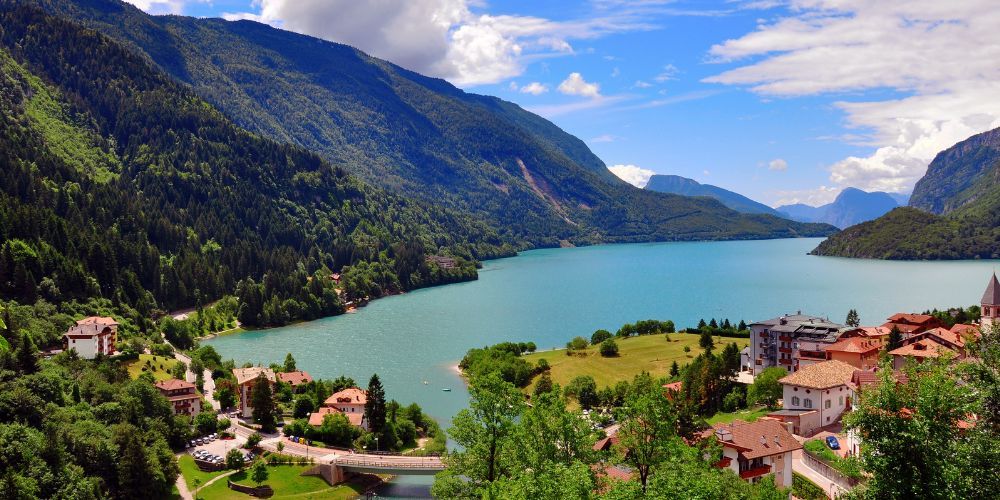
Molveno is a beautiful village at around 800 m of altitude overlooking the lake of the same name, in which the breathtaking Brenta Dolomites reflect. The town is the perfect holiday resort for sports and adventure enthusiasts and those who prefer to relax on the beach.
Nature and wellness, lake and mountains: Molveno offers a solution for every need and desire. It is advisable to walk around the entire perimeter at least once to enjoy the splendour of the panorama to discover the most hidden beaches and the most unspoilt nature. It takes a pleasant walk (about two and a half hours) or a bike ride.
Molveno locates in the spectacular Adamello Brenta Nature Park, the largest protected area in Trentino Alto-Adige (over 600 square kilometres). The park offers the possibility to make excursions, walks in the woods, or high-altitude trails for the more daring. On the other hand, you can stop on the beautiful lake beach bordered by green expanses of woodland and lie in the sun. Characterised by a beautiful lawn expanse, the beach also has a dedicated sports area: tennis courts, beach volleyball, bowling, boat rental, and more.
Indeed, this place is a paradise for sportspeople. Imagine the outdoor sport you prefer: you can do it in Molveno! Nordic walking, trekking, mountain biking, impervious routes to bays, and refuges are the order of the day in this magnificent Trentino town. And if you are feeling very adventurous, you can try paragliding for the thrill of seeing the priceless spectacular view over Dolomites from above!
A furious fire damaged the old town of Molveno in the early 1920s, but not all was lost. Today, the town still retains evidence of the ancient village nucleus thanks to urban constructions typical of the alpine scenery, where stand out small shops, tiny wooden and rocky houses, and pretty mountain lodges. Among the historical buildings, we recommend the Parish Church, the Bell Tower, and Palazzo Saracini.
Green traveling among the most beautiful Italian villages to visit in spring
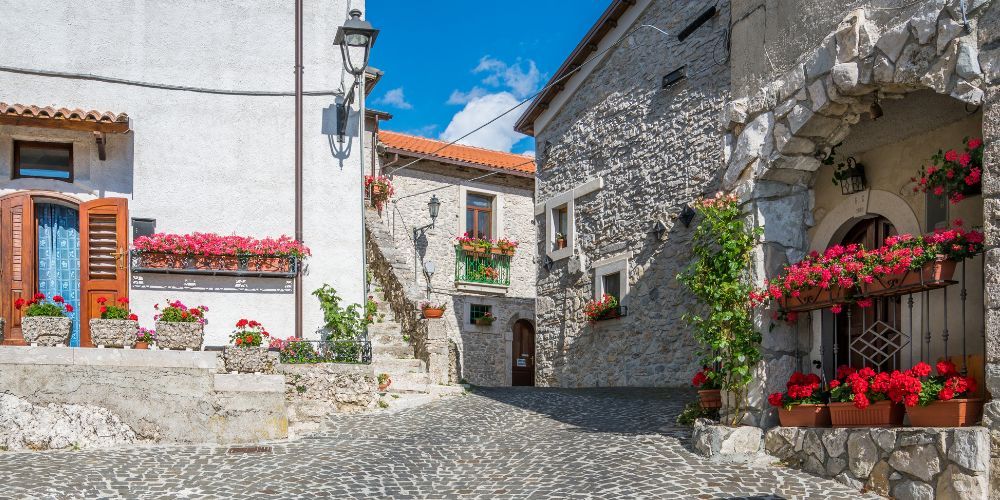
Why choose a sustainable form of tourism? Slow tourism is the best way to travel discovering the villages and their territories, even more so in the wonderful spring setting. Joining a green holiday, in fact, above all means immersing yourself in a rich and satisfying travel experience, based on respect for the territory and the enhancement of local communities.
By moving on foot following a hiking trail, strolling through the magical alleys of villages, or riding a bicycle along the route of a cycle path, you can discover the slow pace of village life, get to know the inhabitants from a closer perspective, experience local traditions first hand and savor the typical products. All of this, enjoying a comfortable and low environmental impact stay in perfect harmony with nature.
A few examples? Many villages give tourists the opportunity to choose ecosustainable accommodation, including real farmhouses, bed & breakfasts and holiday homes that only use renewable energy and are committed to reduce environmental impact, offering engaging activities and experiences to do in the territory and delicious meals based exclusively on zero kilometer products.
About the author
Written on 09/03/2024



Sabrina Fabozzi
The sunny season is coming and it’s time to travel among its colors and scents. Find out the 5 most beautiful villages to visit in spring in Italy!